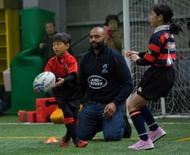The ninth edition of the Rugby World Cup got underway on 20 September 2019 in the land of the rising sun, Japan. It was the first time in the history of world rugby union that the world championships were held in Asia.
Despite being held in a tier-2 rugby nation where other sports like baseball, sumo wrestling, football, and tennis are more popular, the premier competition was destined to be a huge success even before the first match officially kicked off. With 96% of the available 1.8 million tickets already sold, the possibility of all 48 games to be played in front of fully-packed stadiums was almost guaranteed. Even the rugby union’s financial statements projected net earnings of £360 million from the 2019 edition, £30 million more than that earned in the previous Rugby World Cup of 2015.
Historically, the success of any major sport event was measured only based on the popularity of the event, profits through sponsorships and broadcast rights, and the number of viewers inside and outside the stadiums. However, over the past few years, the legacy has become an essential key performance indicator while accessing the success of a mega or major sport event. It is for the very reason; nowadays, that the candidate cities mention legacy projects in their bid books while bidding for a mega-sports event.
Legacy matters
For the Rugby World Cup 2019, several tangible and intangible legacy projects were planned. Japan did not require much infrastructure as the stadiums and facilities built or renovated for the 2002 FIFA World Cup were already operational.
The most significant tangible legacy project was the construction of a brand new Kamaishi Recovery Memorial Stadium with a sitting capacity of 16,334. One of the most famous Japanese rugby towns, Kamaishi, was the victim of the tsunami in 2011.
The ¥3.9 Billion (£28 Million) stadium was built to pay tribute to the people who perished due to the disaster. Inaugurated on 19 August 2018, the stadium has only 6,000 permanent seats, which prevents it from becoming a white elephant in a city with a total population of 32,289. Post World Cup, the stadium will also serve as the home ground of the Kamaishi Seawaves, the local rugby club in the second tier of the national rugby league system. Kamaishi’s successful bid as the World Cup host city accelerated the restoration projects and provided the city a platform to showcase its post-tsunami resurgence to the world. Complete refurbishment of the oldest stadium, also known as the spiritual home of Japanese rugby, Hanazono Rugby Stadium, and one of the country’s premier stadium built exclusively for rugby, Kumagaya Rugby Stadium were other two major tangible legacy projects.

The World Rugby’s ‘Impact Beyond 2019’ is the major intangible Rugby World Cup 2019 legacy project. ‘Impact Beyond’ was started in 2013 to utilize the major rugby events to promote and develop the sport. The ‘Impact Beyond 2019’ was launched for the Rugby World Cup 2019, Japan, in the year 2016.
The central thought behind the project was to develop a genuinely sustainable rugby legacy in the most populous continent, Asia. The project had four key strategic areas. The first was to grow the game in Japan by achieving the figure of more than 200,000 active participants. The second was to grow the sport in Asia by adding 1 million new players and reaching a total of 2 million rugby players by the year 2020. The third was to improve broadcast in Asia by making it available to watch on all platforms. The fourth was to maximize the impact of the Rugby World Cup 2019 and reach the figure of 11 million players globally.
Three days before the start of the World Cup, the Rugby World Cup Japan released the report of the ‘Impact Beyond 2019’ project. The report stated the grand success of the project with the involvement of 22 Asian unions and reaching 1.8 million new participants in the continent (1.07 million from Japan). 769,000 school children in Japan experienced tag rugby in 6,616 elementary schools, and 10,622 tag teachers were trained. The project was also able to generate £2 million from rugby fans, worldwide partners, and individual donors. The amount will be utilized to help 25,000 vulnerable children in Laos, Vietnam, and the Philippines and to support restoration in disaster-affected areas of Japan.

Though the figures show the success of the ‘Impact Beyond 2019’ project, the legacy of the Rugby World Cup and its long-term effectiveness in the development of the sport is still uncertain.
Questions remain
Some sources have unearthed the ground reality of rugby in Japan, where kids don’t do it for fun. In a grueling environment of school rugby, teenagers are made to go through an intense training regimen for 300 days in a year while maintaining body fat far beyond their limits. With only one senior team allowed per school, many of the players train for years and yet never play a match. There is a lack of age-grade rugby clubs, which has led to a decline in the number of players and clubs at junior high school and high school levels.
The problems are not limited to grassroots rugby only. Even the Japan Rugby Football Union (JRFU) lacks a solid financial foundation and political stability, which are necessary for the continuation of development projects throughout the country. The former president of the JRFU, Yoshiro Mori, resigned just three months before the World Cup admitting a lack of vision for Japanese rugby after the World Cup.

Sixteen players in the current 31 men squad of the Brave Blossoms are non-Japanese born, mainly attributed to the sport’s lenient three-year residency rule. The Japanese Rugby team’s spectacular performance at the Rugby World Cup 2019 will attract more foreign players to represent Japan hence creating stiff competition for local players. If this is the case, rugby can earn a controversial reputation of ‘the sport of the immigrants’ in Japan. Nevertheless, the biggest threat to the ongoing legacy project is the Tokyo Olympics 2020. With the biggest mega-event in less than one year, the project ‘Impact Beyond 2019’ has limited time to cement its numbers as youngsters might opt for a different sport after the Olympics.

In conclusion
46.1% of the people in Japan (almost 50 million) watched Japan versus Samoa on television, 150,000 people celebrated Japan’s victory in fan zones, and ITV registered a viewing figure of 2 million in Europe. All in all, the Rugby World Cup has created a massive hype around the sport in the nation.
However, this hype will be only regarded as a real success if it ensures the sustainability of the game, growth in the number of participants, and the continuous usage of the infrastructure. For a genuinely sustainable legacy of the Rugby World Cup 2019, the sport has to be rebranded from old-fashioned, fierce, grueling, and inaccessible to a respectful, creative, fun, inclusive, and available game especially at the grassroots level.
